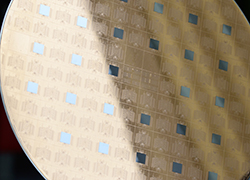Newsletter 02/2020
The next generation of highly integrated microelectronics calls for the development of new manufacturing technologies. To this end, the PIN3S project will develop procedures and have them interact to produce ICs with channel lengths of three nanometers.

Europe, and Germany in particular, possesses special strengths in automotive, energy, safety, security and industrial electronics. The aim of this European project, coordinated by ASML Netherlands, is the pilot integration of three-nanometer semiconductor technology. These integrated circuits approach the limits of what is physically possible. Their performance would significantly exceed that of today’s circuits and thus open up pioneering applications that require especially high levels of computing power. For example, they could spark giant leaps forward in autonomous driving, machine learning or large data centers.
Such structures consist of only a few layers just atoms thick. To reliably manufacture them for high end computer chips, innovations are needed in all aspects of production and in the corresponding measurement technology.
PIN3S aims to be the first to bring such novel technologies together in a pilot production line and evaluate them. An additional focus is on refining the infrastructure so as to ensure defect-free manufacture of highly precise masks for chip production, which serve as templates for the structures to be made.
As part of Germany’s project delegation, Fraunhofer IIS/EAS will develop a sensor module that captures measurement data for exposing the chips to extreme ultraviolet lithography (EUVL). In a vacuum, the module will autonomously record, save and transmit measurement data from EUV chip production, which makes it possible to characterize various process parameters and thus secure the manufacturing process. To achieve this, the test chip’s external dimensions have to correspond to a standard chip so that it can undergo the same process steps a standard chip would. This results in various requirements for the thickness of the components for, say, energy supply, radio interface and other electronics. These requirements need to be taken into account.
 Fraunhofer Institute for Integrated Circuits IIS, Division Engineering of Adaptive Systems EAS
Fraunhofer Institute for Integrated Circuits IIS, Division Engineering of Adaptive Systems EAS
